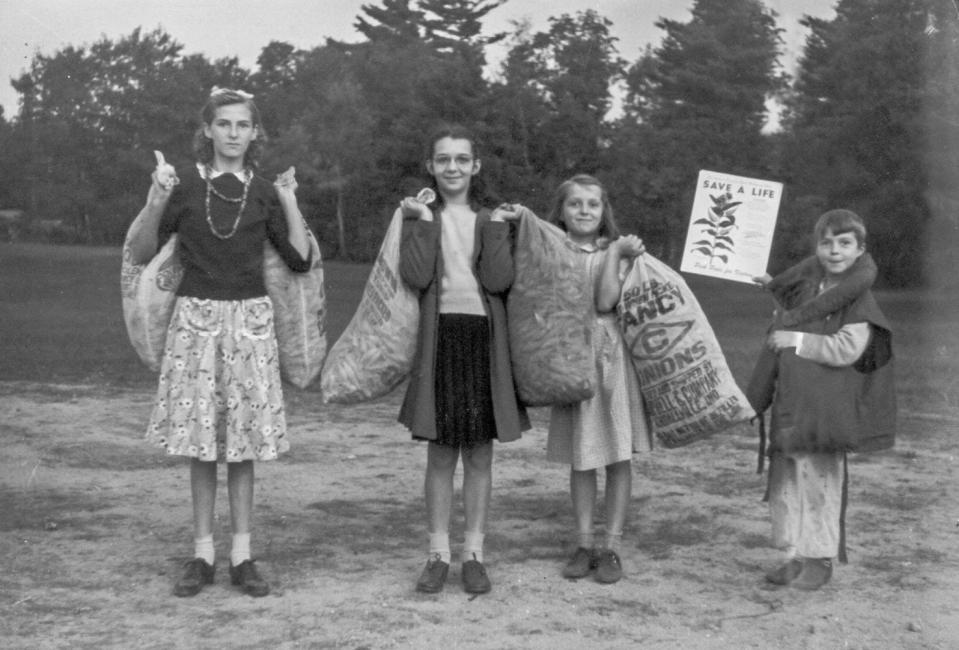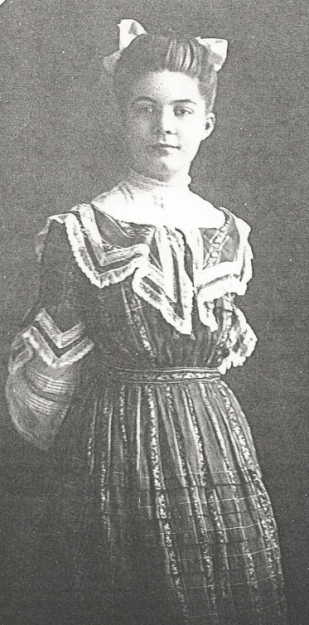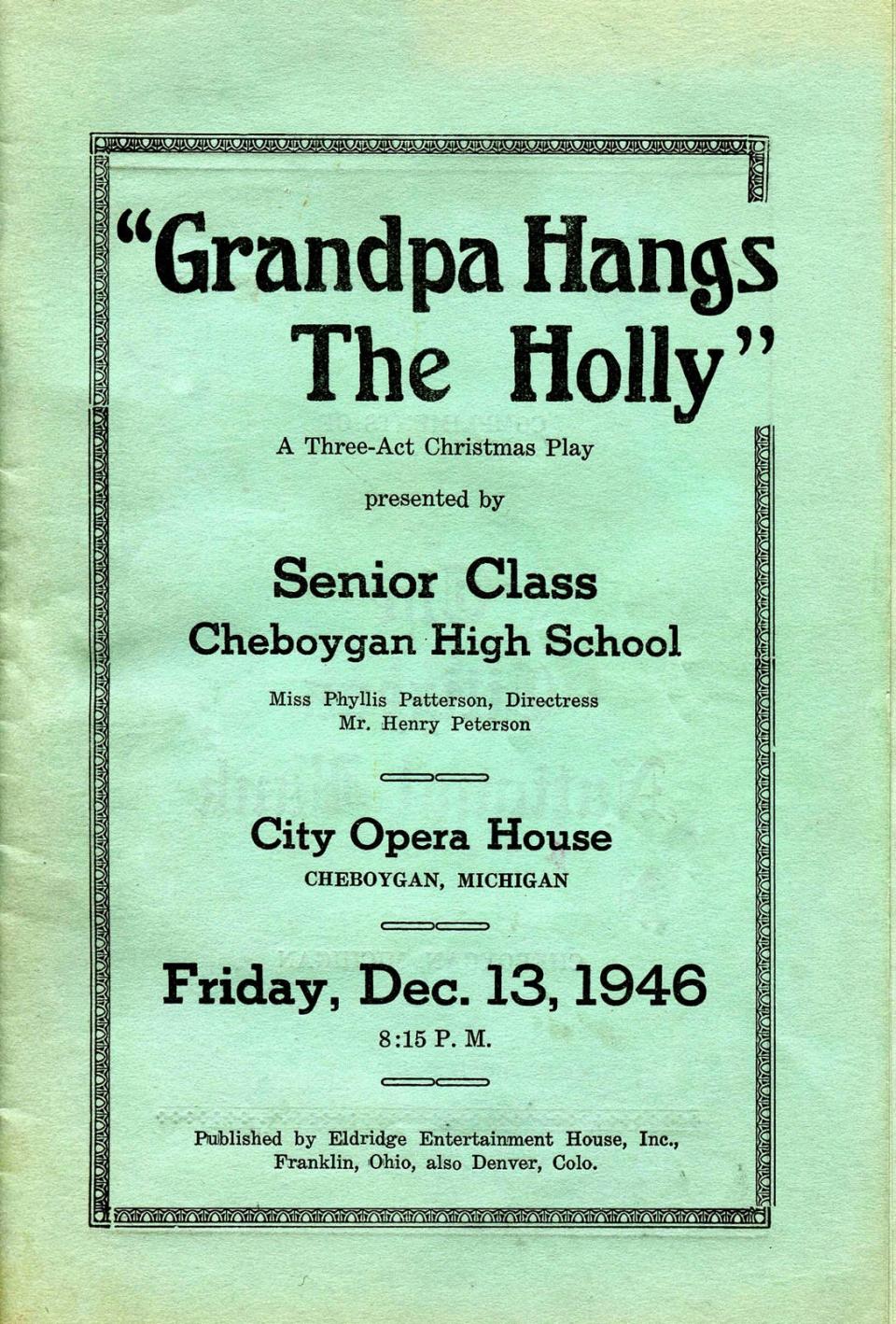History of the Opera House: Post-war Cheboygan and the Opera House through the eyes of Faye Johnston
The last column about the Johnston Family in World War II requires a correction. I said that three Johnston brothers returned safely from WWII, but actually only two brothers, Howard and Bob, went to war.
The third sibling was Faye’s sister, Lorraine Johnston Hamilton. Lorraine was an Army nurse and a lieutenant, while Howard and Bob were sergeants. Because she was an officer, Lorraine was not allowed to fraternize with her brothers while they were stationed in Europe.
Through a series of correspondences with their mother at home, the three somehow arranged to meet in England before coming home for good. Now living in Traverse City, Lorraine, 101 years old, is reading these articles and deserves great thanks for her service.
In 1944, most eligible men were in the Army, forcing many women to join the workforce. Even the children were asked to help. Faye and thousands of other students across America, were doing their part to help the war effort by collecting milk weed pods. The milk weed silk was extracted and used as flotation material for life jackets. As a class assignment, children were asked to fill mesh onion bags with milk weed pods. Two bags provided enough filling for one life jacket.

According to The Monarch Joint Venture, “Over 12 MILLION pounds of milkweed pods were collected and sent by trainloads to Petosky, Michigan, for processing.”
“No one gave a thought to the Monarch butterfly,” Johnston said.
Cheboygan volunteers also stood guard at the Opera House, one of the tallest buildings in town. Armed with binoculars they stood at the third-floor windows and watched for enemy planes. If any suspicious plane was sighted, they were to alert a liaison at the Airport.
Cheboygan’s first public hospital was built in 1942. When the war ended and the soldiers came home in 1945, the baby boom began all over America. As a junior in high school, Faye left her position as a housekeeper to Mrs. Duncan. She took a job as a “candy striper” at the hospital. Most of her work was in the maternity ward. “We may not have known much about birthing babies, but we learned fast,” Johnston said. “It was really busy.” That same year, Faye had a part in the junior class play. She saw the Opera House for the first time.
“It was nothing like it is now, not as well kept, no pretty carpet or fancy seats. But I was just a girl and not paying much attention to the architecture or details. It was a very special place and it was really a great opportunity for the school classes to be in there.” And so began Faye’s lifelong love of the Cheboygan Opera House.
In 1946, Faye, a senior, met Sophia Fultz, “Grandma Shy.” Fultz’s letters to her grandson spoke of her passion for the Cheboygan Opera House, where she first visited in 1900. Faye was 17 or 18 and Fultz was 53 years old.

Fultz decided that the girls in the senior class, many of whom were farm girls, needed more culture. She invited the senior girls to a tea party at her house. The girls were to dress up and were told to wear white gloves.
No one in the Johnston family had white gloves and it took awhile to find a pair that Faye could borrow. She arrived at the tea party in her nicest dress and white gloves with Delores Peasch Petersen and Anne Tromble. Fultz served tea in her finest china and nice linen. She entertained the girls, playing the piano for them. The Fultz home where Sophia gave piano recitals, hosted bridge club and held fancy teas still stands at the corner of Locust and Bailey.
Senior year, Faye had a larger part in the class play at the Opera House, “Grandpa Hangs the Holly” about a mean-spirited old grandfather who was not happy at Christmas. Vic Leonall played the grandfather. “He was always class president,” Faye said. Faye played the spirit of his departed wife who returned to change his mind. She wore a long white dress and got to kiss Vic Leonall, “but only on the forehead, because of his makeup.”

Faye made another appearance on the Opera House stage when she graduated in June 1946. In 1944, most of the 12th-graders joined the service and the class was very small. But by 1946, the graduating class was very large again. It was a hot and muggy day, made worse when the rains started. The Opera House did not have air conditioning.
Seated at the top of the balcony, 83 seniors baked, wearing wool caps and gowns. To cool down, high school students often went to Lakeland Ice Cream on Main Street, with its soda fountain and dairy bar, where “The Hive” now stands.
During the winter months, one of the biggest forms of entertainment for the young people was the ice rink. The city closed the entire city block where West Side Elementary stands now and turned it into a skating rink. There she met her husband Jim. Faye “got busy having babies and running a business,” later to become Johnston’s Marina.
She still went to events in the Opera House and one that stood out in her mind was a cooking class given by the I.G.A grocery store in the summer of 1949. They learned to plan meals and shared recipes but this event was made memorable when one lucky participant won an electric range.
Over the years, Faye attended countless events at the Opera House. She watched her children and grandchildren perform on the stage. Some of her favorite shows are when the U.S. military bands come to town. For Faye, the Cheboygan Opera House will always be a very special place.
— Kathy King Johnson is former executive director of the Cheboygan Opera House.
This article originally appeared on Cheboygan Daily Tribune: Post-war Cheboygan and the Opera House through the eyes of Faye Johnston

